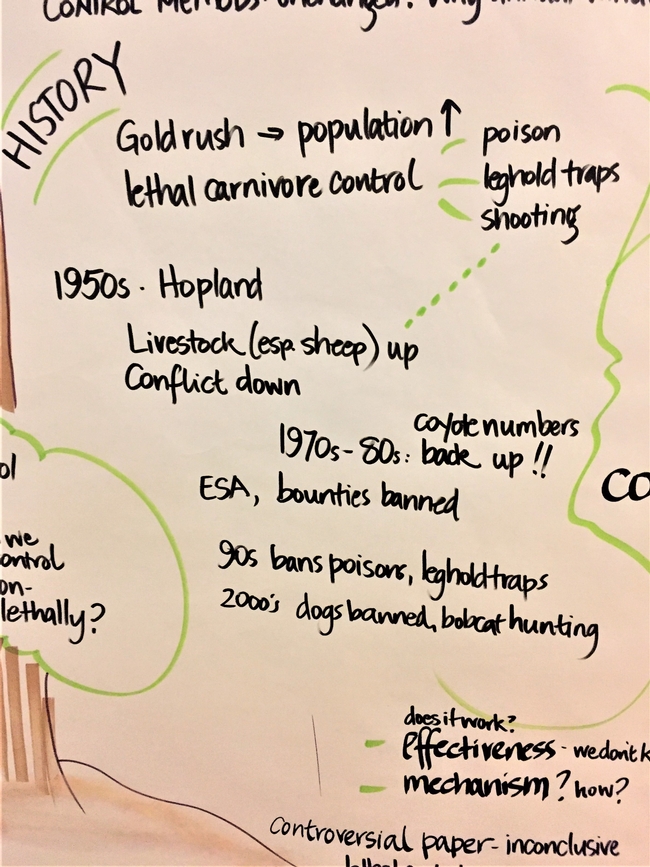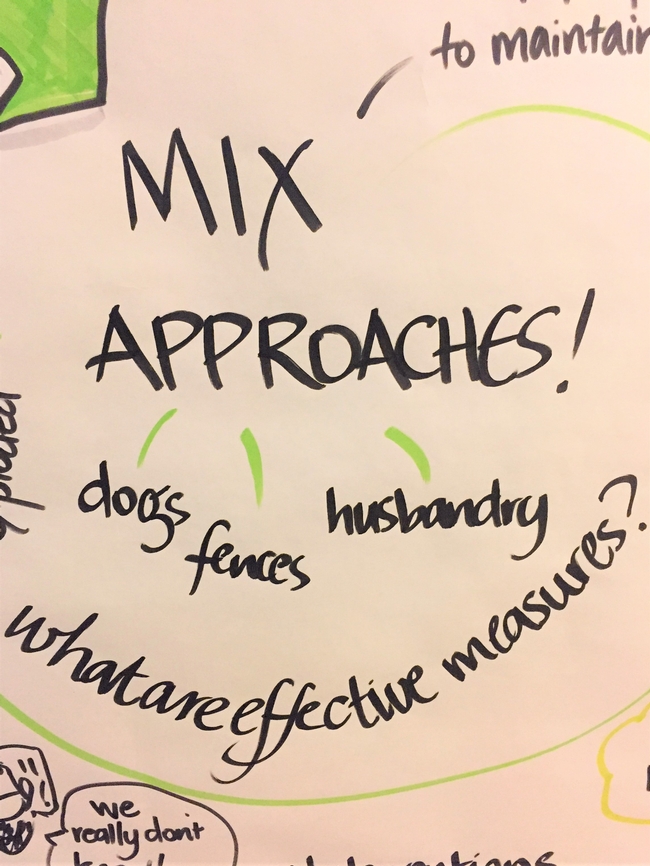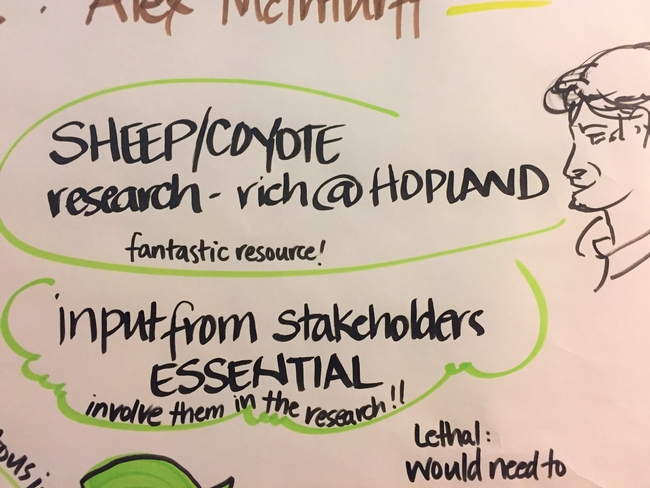submitted by Hopland REC Director, Dr. Kim Rodrigues
Since arriving as the Director for HREC in 2013-2014, I have been committed to protecting all of the amazing resources here at the Hopland Research and Extension Center (HREC,) with a dedicated effort to saving wildlife and reducing losses of sheep. As one of the last remaining sheep research facilities and one of the largest flocks in our immediate area, the sheep are prey to coyotes and other potential predators on the landscape.
With increasing numbers of wildlife across the region, state and nation, conflicts between humans and wildlife are increasing. Our workshop at HREC on August 31, 2017 focused on living with wildlife while managing livestock, with an overarching goal to seek a shared understanding of non-lethal tools through research, implementation and education.
Over 80 participants from a diversity of backgrounds including researchers, ranchers, community members and non-profits attended. All participants experienced demonstrations of several non-lethal tools, including some exciting applications of scary devices, such as Halloween decorations, collars to protect sheep with strobe lights and canine avoidance noises built into them, fencing with an electric charge, lion proof pens and flagging attached to deter movement across the fencing and more. Many participants wanted more hands-on field time with the ranchers using these tools and HREC is working to develop this for late spring/early summer of 2018.
We explored new and emerging research with Dr. Brashares and his team only to learn that it “depends.” Everything is situational and place-based and this is a key lesson or outcome from the meeting. The situational questions asked of each rancher on the panel may help inform the choice of tools and the mix of tools to reduce losses.
We learned that there are practical barriers – such as time, money and labor, as well as scientific barriers to fully implementing non-lethal tools. Yet, one common message was to mix and match tools and vary them frequently. “Match” the tools to your specific situation(s) and mix them up over time and space frequently. Many creative ideas came up to help share tools and other resources and the concept of a lending library with non-lethal tools available to ranchers emerged as a local action HREC will explore further with our community partners.
We understand the importance of strong working relationships and diverse partnerships and we will work with the participants who were able to attend and outreach to partners, such as local agricultural commissioner and staff, California Department of Fish and Wildlife and Wildlife Services to ensure we are all working together.
We learned from and valued the diverse perspectives and there was a tremendous sense of respect for all people present that allowed a dynamic and safe learning environment.
Already, HREC is moving forward with new research to better track and document the work of our large guard dogs (LGDs) as a tool to prevent losses of livestock. The concept of putting GPS collars on our dogs and tracking their movements over a variety of pasture types and sizes and landscapes is already being discussed and outlined by HREC staff and research colleagues. It is recognized that LGDs can and do kill wildlife, so they are not truly a “non-lethal” tool yet they remain one of the most important tools livestock managers rely on to protect their animals. Lethal controls are still used in combination with non-lethal tools – snares, calling, shooting – in most ranching situations but not all. Yet all ranchers shared their goals to reduce losses of both livestock and wildlife and agreed that preventing losses is the best approach in all cases.
I welcome you to visit our HREC site and you can review the amazing graphic art that captured the essence of the workshop, as well as the rancher panel interviews, the presentations and more online. Please join us for future events.
Together, we may find innovative tools and solutions and keep ranching viable in our communities to prevent further fragmentation and conversion to other uses, saving both livestock and wildlife.


